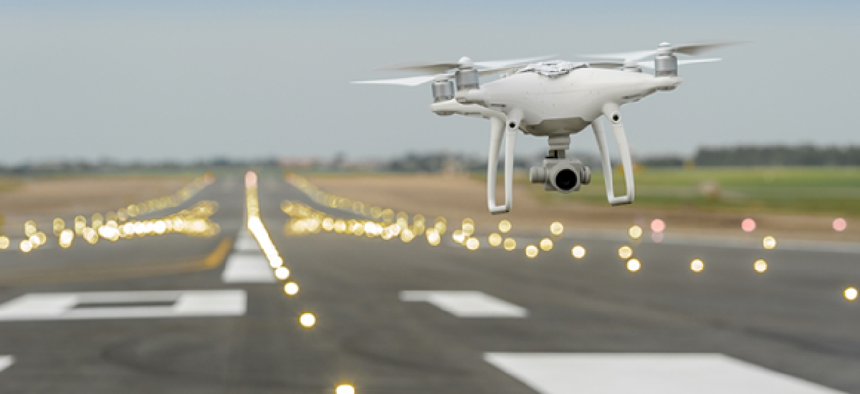FAA preps traffic management for drones


Connecting state and local government leaders
Automated drone authorizations, remote identification and dynamic airspace management are essential for integrating unmanned systems into the national airspace.
The Federal Aviation Administration expects to complete the nationwide deployment of Low Altitude Authorization and Notification Capability for unmanned aircraft systems by the end of this month and demonstrate a UAS traffic management (UTM) system by next year, according to testimony from the administration during a Sept. 6 hearing about integrating drones into the national airspace.
LAANC is used to automate approvals for drone flights near airports. Drone operators use an app to submit flight information and have it checked against FAA preapproval zones and temporary flight restrictions. If approved, the system returns an authorization for flight in near real time. The system currently covers 82 percent of air traffic facilities in the country, according to the FAA.
But LAANC is just one step toward a nationwide UTM system, witnesses said during the House Transportation Aviation subcommittee hearing.
“Our plan for future UTM capabilities includes a number of components -- LAANC, remote identification and dynamic airspace management -- that will support the needs of industry, FAA, and our security partners,” FAA Technical Center Director Shelley Yak said in her written testimony.
All five witnesses on the panel said they were in favor of requiring aircraft to have remote ID capabilities that would allow law enforcement along with other drone operators to identify unmanned systems in the airspace.
Remote identification is "a critical, foundational element for any sort of universal traffic management system,” said Mariah Scott, the president of Skyward, a drone management firm.
She described UTM as a “decentralized network, like a wireless network or the internet, for coordinating all types of aircraft efficiently, safely and scalably.” This system will require a number of different communication links: from the operator to the drone, from the drone to other drones, from the drone to the UTM, and so on. How exactly this communication will be handled is still being studied.
To ensure stable dynamic communications between the drone and the operator, Yak said the FAA is researching "frequency levels, the minimum operational performance requirements for that data link to ensure the integrity of that link to allow us to integrate these aircraft into the system.”
JoeBen Bevirt, the founder and CEO of Joby Aviation, an aircraft manufacturer, said the communication links need to be “redundant and diverse.” That would mean a drone could have secure connections to both satellite and cellular networks as a form of backup, he said.
UberElevate is working with NASA and the FAA “to develop and test the information exchange protocols between the FAA’s systems and the industry-based UAS service supplier systems,” said Tom Prevot, the company's director of engineering and airspace systems. “To kickstart this area of collaboration, a simulation study will be conducted at NASA Ames Research center in the Silicon Valley in just two weeks,” he said in his testimony.
Yak said the FAA plans to demonstrate its UTM capabilities sometime next year.
“I think the UAS traffic management arena is blossoming well,” she said. “We have a demo coming up in the 2019 timeframe.” The FAA will be work with NASA and industry to fly drones through test sites and simulate drone flights through the NextGen Integration and Evaluation Capability Laboratory, she said.
“The technical and regulatory project of integrating the airspace is enormous,” Scott said. “Small steps are already having a tremendous impact -- but now we need to make bigger strides.”
NEXT STORY: Using lasers to keep drones aloft




